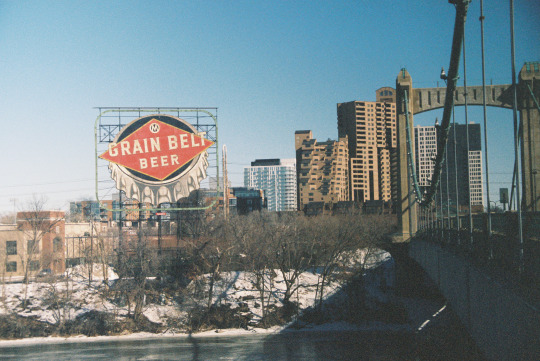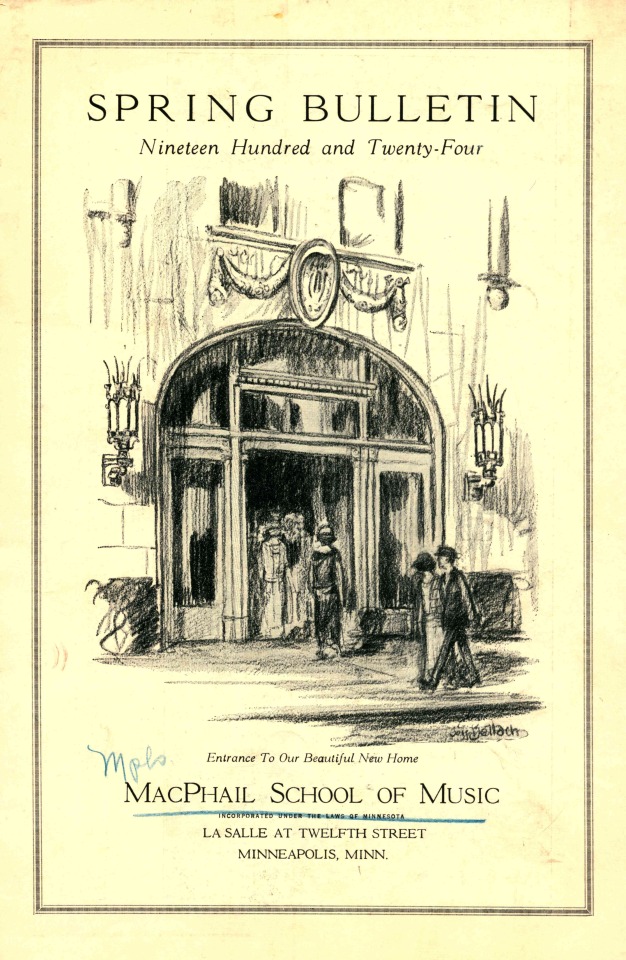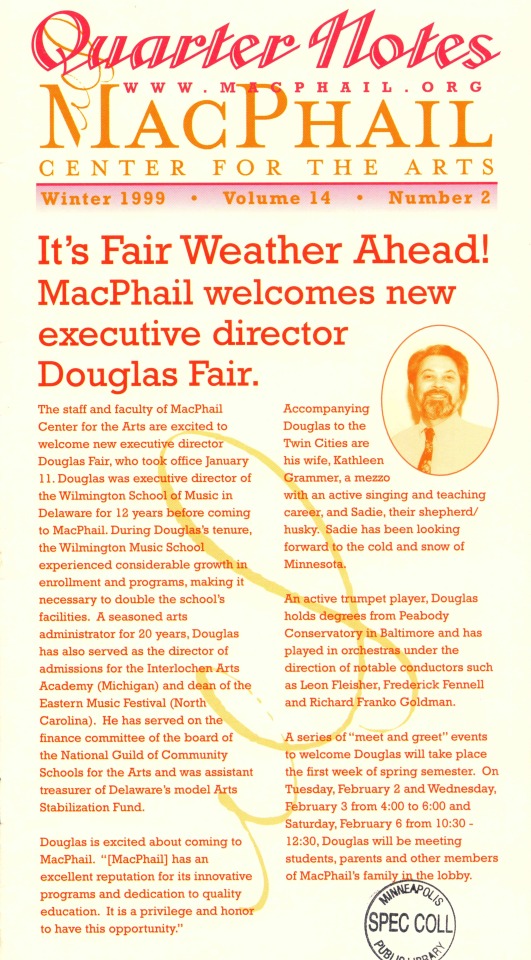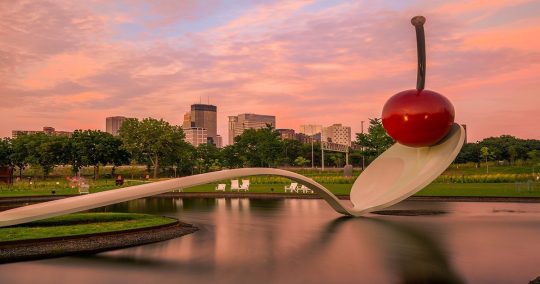#Minneapolis Riverfront
Explore tagged Tumblr posts
Text


walking along the Mississippi River
Minneapolis, Minnesota
#film photography#35mm#analogue#photographers on tumblr#original photography#minneapolis#minnesota#mississippi river#midwestern gothic#grain belt#heartland#frozen river#twin cities#Minneapolis Riverfront
650 notes
·
View notes
Video
Hwy 65/Third Avenue Bridge, Minneapolis 12/1/23 by Sharon Mollerus
#Mississippi River#Minneapolis Riverfront#Minneapolis 12/1/23#Hwy 65/Third Avenue Bridge#Minnesota#Minneapolis#MN#flickr
33 notes
·
View notes
Photo

The Washburn A Mill, the world's largest flour mill when built and now part of the Mill City Museum. Nominated in USA Today as the best history museum for 2nd year in a row. 4th place last year, this years voting ends on 02/12. (Minneapolis, January 2024
#Downtown#Downtown Minneapolis#Flour#Mill#Mill City Museum#Minneapolis#Minnesota#Museum#Riverfront#Stadium#US Bank Stadium#Washburn
2 notes
·
View notes
Text

Minneapolis riverfront via Pantografata
#minneapolis#minnesota#twin cities#downtown#travel#midwest#aesthetic#wanderlust#mississippi river#scenery#landscape#waterfall
38 notes
·
View notes
Text




Music with MacPhail
In 1907, Minneapolis Symphony Orchestra member William S. MacPhail founded the MacPhail School of Violin. In 1924, the MacPhail School of Music, as it was then known, moved to a new headquarters at 1128 LaSalle Ave. For 80 years MacPhail educated generations of local musicians from that location. Over the decades, the school's class offerings have included everything from toddler music classes to college degrees. When under the umbrella of the University of Minnesota in the 1960s, MacPhail Center for the Performing Arts introduced one of the nation's first Suzuki Method music programs for young learners. Since its founding, MacPhail has counted many esteemed local musicians, including Minnesota Orchestra members, among its faculty. Photos of many of these MacPhail teachers and students are available in the Hennepin County Library Digital Collections.
In 2008, the school moved to a new home on the Mississippi riverfront. From the new building and satellite locations throughout the metro, MacPhail Center for Music continues to educate musicians of all ages, including through programs at our libraries.
#minneapolis#minnesota#music history#musicians#schools#macphail center for music#music education#minnesota orchestra
5 notes
·
View notes
Text
The Benefits of Executive Car Service for Minneapolis Travelers
Are you heading to an important business meeting, catching a flight, or simply exploring the vibrant city of Minneapolis? Getting reliable transportation can help you enjoy a relaxing journey. For professionals and discerning travelers, an executive car service in Minneapolis offers superior comfort, convenience, and style that surpass traditional ride-share or taxi services. Minneapolis is a city known for its business hubs, cultural landmarks, and bustling downtown; but opting for a car service for corporate transfers in Minneapolis can improve your entire travel experience.

How Does Executive Car Service Benefit Corporate Travelers? Minneapolis is a major business hub and home to several Fortune 500 companies, as well as thriving industries in finance, healthcare, and technology. For business travelers, time is of utmost significance and every moment counts. Please check out why an executive car service is an essential tool for corporate travelers in Minneapolis:
Airport Transfers - Minneapolis-Saint Paul International Airport (MSP) is one of the busiest airports around the region which makes airport transfers a significant aspect of your travel itinerary. Corporate car transfer services offer timely, seamless airport pickups and drop-offs, ensuring that you never miss a flight or arrive late for a meeting.
Corporate Events and Conferences - Whether you want to attend a business conference at the Minneapolis Convention Center or a high-profile event downtown, executive car service can ensure that you arrive on time and in style. With a professional chauffeur handling your transportation, you can focus on your business objectives.
Impressing Clients – Whether you want to host important clients or business partners in Minneapolis, nothing makes a better impression than providing them with a luxury car service. It will reflect well on your company and show your guests that their comfort is a priority.
How Do You Explore Minneapolis in Comfort? Apart from just a city for business, Minneapolis is a cultural and entertainment hotspot with plenty to see and do. After your workday is done, a corporate car transfer service can help you explore the best that Minneapolis has to offer:
Visit the Minneapolis Sculpture Garden – As home to iconic landmarks like the Spoonbridge and Cherry, the Sculpture Garden is a must-see destination for art enthusiasts. An executive car service can take you directly to the park so that you can enjoy the city's artistic charm without worrying about parking or navigation.
Catch a Show at the Guthrie Theater - Minneapolis has a thriving theater scene, and the Guthrie Theater is the center of attraction. After a day of meetings, you can enjoy a night out with a performance and have your chauffeur waiting to whisk you back to your hotel or next destination.
Discover the Mississippi Riverfront - With breathtakingly beautiful views and rich history, the Mississippi Riverfront is one of the most scenic areas in Minneapolis. You can visit the Stone Arch Bridge or take a leisurely ride along the riverbanks in the comfort of your executive vehicle.
Bottom Line – Are you looking for professional car services in Minneapolis? If yes, then you should choose no other than Citywide, Inc. We specialize in providing corporate transfers in Minneapolis to make your ground transportation as hassle-free and relaxing as possible. If you need executive car service in Minneapolis, please contact us today at 763-315-6080.
#Car Services#cars#Chauffeur Services#Luxury Car Services#Minneapolis car service#Minneapolis car services#MSP car service#Rochester car service
1 note
·
View note
Text
Explore Minneapolis with These 10 Romantic Date Ideas
Discover unforgettable date ideas in Minneapolis with Minneapolis Singles! From cozy coffee dates to scenic riverfront walks, experience romance in the heart of the city. Whether you’re seeking adventure or a relaxed vibe, Minneapolis Singles helps you create magical moments perfect for any season. Find love, connection, and memorable experiences!
Read more: Top 10 Romantic Date Ideas in Minneapolis for Fall 2024

0 notes
Text
Top Attractions in Minneapolis: My Must-See List!
When I first planned my trip to Minneapolis, I wasn’t sure what to expect. I’d heard about the cold winters and the Mall of America, but I soon discovered there’s so much more to this vibrant city. Minneapolis is a city full of surprises, offering a mix of natural beauty, cultural landmarks, and unique attractions. If you’re planning a visit, here’s my guide to the top attractions in Minneapolis that you simply can’t miss.

Problem: Deciding Where to Go in Minneapolis
Whenever I travel to a new city, the hardest part is always deciding where to go and what to see. Minneapolis was no different. With so many places to choose from, it can feel overwhelming. I didn’t want to waste my time on average spots; I wanted to experience the best this city has to offer.
Agitation: FOMO on Iconic Experiences
I’ve been that traveler who missed out on iconic experiences because I didn’t know where to go. I didn’t want that to happen again. The fear of missing out is real, especially in a city as rich in culture and history as Minneapolis. I wanted to make sure I hit all the top spots and really got to know what makes Minneapolis unique.
Solution: My Top Picks for Attractions in Minneapolis
Here are the top attractions in Minneapolis that I discovered, each offering a unique experience that captures the city’s spirit:
1. The Minneapolis Sculpture Garden
One of my first stops was the Minneapolis Sculpture Garden. It’s one of the largest urban sculpture gardens in the country, and I could see why it’s a favorite among locals and tourists alike. I spent hours wandering around the garden, admiring over 40 sculptures, including the iconic “Spoonbridge and Cherry.” It's free to enter, and with over 11 acres to explore, it's easy to spend a whole afternoon here. Plus, the garden is open year-round, so even if you’re visiting in the winter, you can enjoy this artistic haven.
2. Walker Art Center
Right next to the Sculpture Garden is the Walker Art Center, a must-visit for any art lover. I’m not usually a big museum person, but the contemporary art exhibits here were fascinating. The center also offers performing arts, film screenings, and a range of other events. General admission is $15, but they have free Thursday nights and the first Saturday of each month, which is a great deal if you’re on a budget like me.
3. Minnehaha Regional Park
Next, I headed to Minnehaha Regional Park, home to the beautiful Minnehaha Falls. This 53-foot waterfall is a sight to behold, especially in the spring and summer months when the water is flowing. I hiked along the trails, taking in the stunning natural scenery. The park is free to enter, making it an excellent option for a budget-friendly day out. There are also bike rentals available, and I saw plenty of families enjoying picnics in the green spaces.
4. The Chain of Lakes
If you’re looking for outdoor activities, the Chain of Lakes is the place to be. This series of five interconnected lakes—Lake Harriet, Lake Calhoun (Bde Maka Ska), Lake of the Isles, Cedar Lake, and Brownie Lake—offers miles of biking and walking paths, kayaking, and even swimming. I rented a paddleboard at Lake Harriet, which was an amazing way to spend a sunny afternoon. Each lake has its own charm, and I loved the feeling of tranquility while being just minutes away from downtown Minneapolis.
5. The Mill City Museum
To get a sense of the city’s history, I visited the Mill City Museum. Located on the historic Mississippi Riverfront, this museum is built into the ruins of what was once the world’s largest flour mill. The interactive exhibits gave me a deep dive into Minneapolis’s past as a booming mill town. The museum also offers great views of the Stone Arch Bridge, another must-see landmark in the area.
Conclusion: Discover the Best of Minneapolis
Minneapolis is full of surprises. From the art-filled streets to the serene lakes, there’s something here for everyone. Whether you’re a fan of the outdoors, love exploring museums, or just want to enjoy some local culture, you’ll find plenty to do. Make sure to add these top attractions in Minneapolis to your itinerary. You won't be disappointed!
0 notes
Text
“Letter From Birmingham Jail” Essay
In the letter Dr. King also depicts the censorship of the unjust laws, the privilege of peaceful assembly and peaceful protest, which is the First Amendment of the United States Constitution (Letter from Birmingham Jail, Dr. King). Dr. King also states that he was arrested that Friday for parading without a permit to prevent segregation. That of which is an example of an unjust law due to the fact there is an ordinance in place which requires a permit for a parade but when that ordinance is used to deny citizens the right to protest openly and freely against segregation, is considered unjust. The relevancy that this constitutes is also in retrospect to the violent protest that took place at the US Capitol January 6, 2021. In contrast to the events that had taken place in the official “Letter from Birmingham Jail” which was orchestrated to allow individuals to disobey unjust laws and take direct action to bring social change. The attacks on the US Capital involved violent actions which included breaching security barriers, vandalizing property, physically assaulting law enforcement officers and disrupting a joint session in congress. All of which ultimately distinguishes the difference between peaceful demonstrations, which involve nonviolent expressions of dissent or demands for equality and change.
Dr. King eloquently highlights police brutality as a manifestation of systemic injustice faced by African Americans in the fight for civil rights in his letter. A perfect example of that senseless killings and use of unnecessary excessive force that have taken place today are the deaths of George Floyd, Elijah McClain, Breonna Taylor, Manuel “Manny” Ellis, and Tyre Nichols depicted in the New York Times article by writer (D.S. Burch). Burch argues that these untimely deaths have resulted in a mixed bag of verdicts, including convictions, acquittals, and, in one case, a mistrial. Ellis McCain of Aurora, Colorado was placed in a neck restraint, beat, hogtied along with a hoodie placed over his head, and illegally injected with excessive amounts of ketamine by the paramedics. Both George Floyd and Manuel “Manny” Ellis died at the hands of the police pleading that they could not breathe. In George Floyd’s case Minneapolis police officer Dereck Chauvin was convicted of murder and manslaughter charges and sentenced to 22 and a half years. The other three officers were found guilty on various state and federal charges (D.S. Burch.) Only one officer in Breonna Taylor’s case pleaded guilty and was sentenced to five years in prison. In McCain’s case two paramedics were convicted, yet two police officers were acquitted of all charges, and one returned to the force. All these cases with law enforcement officers resulted in some convictions, yet come cases are still unresolved due to an acquittal or mistrial resulting in no justice served at all for the African American community collectively as a whole.
Racial prejudice is something that still exists today, and Dr. King addresses the systemic barriers in particular places like Alabama where African Americans faced discrimination which prohibited their right to vote. A concise example of this is the Riverfront Brawl that took place in Montgomery, Alabama. Damien Pickett, an African American co-captain was the involved in the incident and he was confronted by several other white men in a heated exchange that quickly escalated (Jones 5). The argument in this article is that several experts, pundits, users may possibly consider this incident a hate crime, while others may consider it a racial divide, or simply have nothing to do with race at all (Jones 2). Steven L. Reed, Montgomery’s first Black mayor, had two completely different perspectives on this subject matter. He strongly believed in our justice system but felt as though this level of violence should not go unrestrained. (Jones 3). Derryn Moten was a professor of American History, and he completely rejected the idea that race played any significant role (Jones 7). Lastly, Christina Ferraz, public relations consultant firmly believed that public officials in positions of power shouldn’t make statements about violent incidents related to the Riverfront Brawl or civil unrest (Jones 6). All of these statements conclude that arguably there are many different opinions and assumptions in terms of whether or not race was involved, or this incident was considered a hate crime.
In conclusion, Dr. Martin Luther King Jr.'s "Letter from Birmingham Jail" remains profoundly relevant today, particularly in its exploration of just and unjust laws, its recognition of not being able to enact the right of peaceful assembly and peaceful protest, police brutality and racial prejudice which still exist today. Dr. King emphasized the significance of civil disobedience, non-violent protest, and the pursuit of justice as a crucial step towards achieving equality and justice in America, illustrating the necessity of dismantling institutionalized racism to uphold the nation’s moral and constitutional values. Dr. King's insightful distinction between just and unjust laws provides a moral framework for evaluating current legislation and social practices, urging us to challenge those that perpetuate inequality. Furthermore, Dr. King's insistence on the moral necessity for the oppressed to demand their rights continues to resonate, inspiring ongoing movements for justice and equality. His letter serves as a timeless call to action, reminding us of the imperative to confront injustice with courage and to advocate for a society where all individuals are treated with dignity and respect.
1 note
·
View note
Text
May 10th - Omaha
After snoozing in a tent till the sun had other plans, we packed up and Lewis made cowboy coffee while I puttered about the virtual reality map in the early morning light. We had finally reached a balmy 50+ degree morning and were upbeat about seeing the sun upon waking for the first time in what felt like a while.
We walked a little of the lake's perimeter and found a nice swinging bench to sit in. Staring at water is a good human pass time.

Finally we resigned to cutting from one end of Nebraska to the other in one day and fired Stacey up, agreeing to find a coffee shop and do a little work somewhere in the giant square we were to plot across for the day.
After passing up many, many drive through cafes (why are there so many out here??) we finally found a little espresso shop in South Platte, NE which also seemed to be the center of the local universe. Lewis and I click-clacked away on our technology while an older woman braided her mother's hair and two people read the same newspaper side by side. Kate, the barista who served us coffee struck up conversation and gave us many recommendations for Omaha, readjusting her head scarf and her round glasses while gesticulating about art cinemas and Little Bohemia in the city.
When satisfied with our work, we crawled over to Sinclair #4 on our journey (the dinosaur logo feels a little too on the nose) and discovered that the portable battery Lewis uses to regularly jump Stacey (she needs a new starter but Lewis is convinced that the labor of popping her hood nigh every time she turns off is no skin off of his back) was not charged enough to get her motor humming.
While waiting for the battery to charge, we re-pack the car, wait twenty minutes, and discover in exasperation that the battery, charging in the service station on a counter, has only climbed a single percent. In a bit of desperation we ask a kind local pulling a trailer if he can jump Ms. Abrams back online and, Brett (we drink to Brett!) whips out jumper cables and doesn't hesitate to give us the boost we need.

We bless South Platte, try to get Stacey to charge her own lighter by plugging the external battery into the console, and pray we get enough juice or have enough gas by Omaha. Not even stopping for the legendary Kearney Arch--a museum that resides directly OVER the highway, regaling the voyage west by early pioneers.

We bump along across the Husker state, and come to Lincoln City before long, driving around downtown but too nervous to shut Stacey off to stop, and then barrel into Omaha some 65 miles later to check into the Magnolia Hotel by sunset. We made it!
After hucking our bags in our room, showering off the soot of campfire, and stretching our backs on a real bed, we dress for dinner and troop out to see downtown Omaha.


I personally was expecting very little from Omaha, Nebraska. I figured it would be a very industrial city surrounded by the flat of middle-country. I did not expect an INSANE SCULPTURE GARDEN! Right in the middle of downtown!! The Riverfront park system opened in unity sometime late last year, but the park was alive with art, buskers, giddy locals, roller skaters, and dogs dogs dogs everywhere. Omaha was alive, and it was easy to feel the hum of the city from where we stood.












After catching a beerish night cap, we rolled back to the Magnolia, and fell down into clean sheets. Nebraska's in the books. Tomorrow, Minneapolis!
0 notes
Text





Evening Walk Along the River | Minneapolis | Christmas Eve 2018
#minneapolis#minnesota#landscape#cityscape#skyline#golden hour#lookslikefilm#riverfront#mississippi river#photographers on tumblr#last light#nikon d750
2 notes
·
View notes
Photo

Stone arch bridge
54 notes
·
View notes
Video
Saint Anthony Falls, Minneapolis 12/1/23 by Sharon Mollerus
31 notes
·
View notes
Video
Red Sky at Night... by Greg Lundgren Via Flickr: A magenta sky, reflected in the Mississippi River, surrounds the Minneapolis skyline and the Stone Arch Bridge.
#twin cities#minneapolis#stone arch bridge#sunset#mississippi river#minnesota#cityscape#urban#skyline#gold medal flour#wells fargo#riverfront#hdr#magenta#pink#twilight#autumn#evening#ids#skyscrapers#architecture#bridge
234 notes
·
View notes
Text
Discovering the Architectural Gems of Minneapolis: From the Foshay Tower to the Historic Grain Belt Beer Sign
Minneapolis, the largest city in Minnesota, is home to a diverse array of architectural styles that reflect its rich history and cultural heritage. From towering skyscrapers to quaint brick buildings, the city's architecture is a feast for the eyes.

One of the most iconic structures in Minneapolis is the Foshay Tower. Completed in 1929, this Art Deco skyscraper stands at 447 feet tall and was the city's first skyscraper. It was also the tallest building in Minneapolis until 1971. The Foshay Tower is a true architectural masterpiece, with its intricate ornamentation, geometric shapes, and symmetrical design. The building has been designated a National Historic Landmark, and visitors can take an elevator to the observation deck on the 30th floor for a panoramic view of the city.
Another notable architectural feature in Minneapolis is the historic Grain Belt Beer Sign. Located on the Mississippi Riverfront, this iconic sign was built in 1941 and was originally used to advertise Grain Belt Beer. The sign is made of metal and neon lights and stands at 80 feet tall. The sign is a great example of the Art Deco style and is considered one of the most important examples of neon advertising in the United States.
Minneapolis is also home to several other notable architectural styles, including Victorian and Gothic Revival, as well as a growing number of modern, minimalist buildings. The city has a vibrant and active preservation community, and many of its historic buildings have been carefully restored and adapted for new uses.
In conclusion, Minneapolis is a city with a rich and diverse architectural heritage. From the iconic Foshay Tower and the historic Grain Belt Beer Sign to the Victorian and Gothic Revival buildings, the city offers something for everyone. The city's active preservation community ensures that these architectural treasures will be enjoyed for generations to come. Whether you're an architecture buff or just appreciate beautiful buildings, Minneapolis is a city worth visiting.
2 notes
·
View notes
Photo

the historic riverfront // minneapolis // mn
- by Ryan Jackman
110 notes
·
View notes